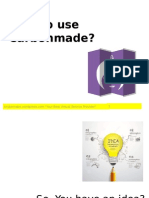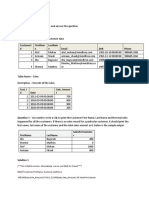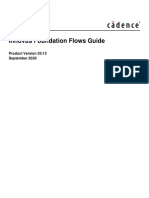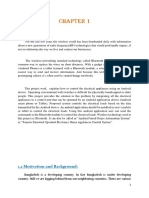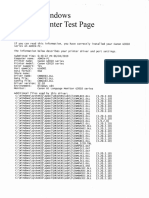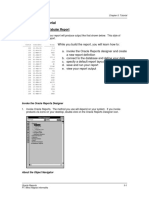CLOUD COMPUTING
What is "the Cloud"? The "cloud" is simply a metaphor for the internet. It refers
to something that's located remotely, meaning it's not physically on your
computer or in your office
What is Cloud Computing? Cloud computing is when you get computing services
like servers, storage, databases, networking, software, and analytics – delivered to
you through the internet. These services are managed by a third party, and they
provide access to powerful software and networks of computers.
�Benefits of Cloud Computing There are many advantages to using cloud
computing:
Lower Costs: You can reduce expenses because you don't have to buy and
maintain your own hardware and software.
Easy Access: You can get to your information and applications from
anywhere with an internet connection.
Increased Productivity: It can help you get more done.
Scalability: You can easily increase or decrease your computing resources as
needed.
Automatic Updates: You get software updates automatically without having
to do anything.
Business Continuity: Your data is backed up and can be recovered easily,
helping your business keep running even if something goes wrong.
Pay-as-you-go: You only pay for what you use.
Simple Examples of Cloud Computing You probably already use cloud computing
without even realizing it:
Email: Services like Gmail and Hotmail let you access your email from any
device with an internet connection, because your emails are stored on their
servers, not on your computer.
Office Software: Programs like Office 365, Google Docs, and Zoho Office
allow you to create and edit documents online. This means you can access
them anywhere, share them easily, and even work on them with multiple
people at the same time.
Storage: Services like OneDrive, Google Drive, iCloud, and Dropbox let you
store your files online.
�Common Characteristics of the Cloud computing services typically have these
features:
On-Demand Self-Service: You can get computing resources whenever you
need them, without needing a person to set it up for you.
Network Access: You can access the services from different types of devices
over the internet.
Rapid Elasticity: Resources can be quickly and easily increased or decreased
to meet changing demands.
Measured Service: Usage of resources is monitored, and you are billed
based on what you use. needs. Examples include Microsoft Office 365 and
Google Workspace.
Pros and Cons of Cloud Computing
Pros:
You need less of your own hardware.
Lower costs for hardware and software maintenance.
Instant software updates and Improved performance.
Easy access to your data and applications.
You only pay for what you use.
Generally less expensive overall.
Better disaster recovery in case of problems.
Cons:
Requires a good internet connection with sufficient speed.
Security concerns are a big issue, as you are entrusting your data to another
company.
You have limited control over the underlying infrastructure.
�CLOUD MODELS
1. Deployment Models These describe where the cloud environment is located
and who owns it. There are three main types:
Public Cloud: These clouds are owned and run by a third-party company
that provides computing resources over the internet. Anyone can access
and use them, usually by paying for what they use. Examples include
Microsoft Azure and Amazon Web Services (AWS).
Private Cloud: This type of cloud is built specifically for a single organization
and is not open to the public. It can be managed by the organization itself
or a third party, and can be hosted internally or externally.
Hybrid Cloud: This is a combination of a private cloud and public cloud
services. It allows data and applications to move between the private and
public clouds, offering more flexibility.
�2. Service Models These describe the different levels of services you can get from
a cloud provider. There are three main ones:
Infrastructure as a Service (IaaS): With IaaS, a vendor gives you access to
basic computing resources like servers, storage, and networking. You then
use your own platforms and applications on top of their infrastructure. You
pay only for what you use, and the infrastructure can scale as your needs
change. It saves you the cost of buying and maintaining your own hardware,
and your data is safe even if something fails. Examples are Amazon Web
Services (AWS).
Platform as a Service (PaaS): PaaS provides a cloud environment where you
can develop, manage, and deliver applications. In addition to storage, you
get tools to build, customize, and test your applications. This allows
organizations to focus on developing software without worrying about the
underlying systems, as the provider manages security, operating systems,
and backups. It also helps teams work together remotely. An example is
Google App Engine.
Software as a Service (SaaS): SaaS gives you access to a vendor's software
over the internet. You don't install the applications on your own devices;
instead, they are on a remote cloud network and accessed through a web
browser or an API. You typically pay a subscription fee. The provider
handles all the management, installation, and upgrades of the software.
Your data is secure in the cloud, and resource usage can be adjusted based
�Conclusion Cloud computing is a major shift in how we use computers, offering
more flexibility, scalability, and reliability, while potentially lowering costs.
However, organizations are sometimes hesitant to adopt it due to ongoing security
concerns Conclusion Cloud computing is a major shift in how we use computers,
offering more flexibility, scalability, and reliability, while potentially lowering costs.
However, organizations are sometimes hesitant to adopt it due to ongoing security
concerns

























































